The advantages of telescopic hoods are their compactness and ease of use. When folded, they take up less space, which is especially convenient in small kitchens. In addition, when folded, the hood does not interfere or create obstacles while not in use. However, when it is necessary to begin cleaning the air above the stove, the telescopic hood easily extends, ensuring effective removal of vapors and odors during cooking. Consider, for example, the Millen MBKHSG 601 BL model to eliminate inconvenience and make the cooking process more convenient.
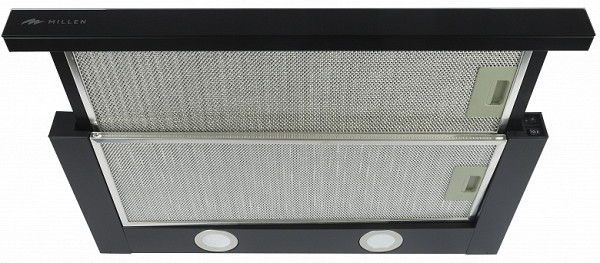
Is it convenient to use, what is its power, noise and energy consumption, as well as other details, read below.
Characteristics
| Manufacturer | Millen |
|---|---|
| Model | MBKHSG 601 BL |
| Type | built-in telescopic kitchen hood |
| Country of Origin | China |
| Guarantee | 3 years |
| Life time * | 12 years |
| Control | keyboard |
| Power consumption | 125 W |
| Free exit | 1000 m³/h |
| Ventilation | 820 m³/h |
| Recycling | 640 m³/h |
| Number of speeds | 2 |
| Noise level | up to 52 dB |
| Filter | aluminum carbon (sold separately) |
| Backlight | LED, 2×1 W |
| Weight | 6.3 kg |
| Dimensions (W×H×D) | 600×280×160 mm |
| Dimensions for installation (W×H×D) | 500×280×120 mm |
| Network cable length | 1.2 m |
* Contrary to popular belief, this is not the time limit after which the device will necessarily break down. However, after this period, the manufacturer ceases to bear any responsibility for its performance and has the right to refuse to repair it, even for a fee.
Equipment
The hood was delivered in a brown cardboard package, additionally reinforced with nylon slings. On the front of the package there is an image of the hood in an unfolded state, and the manufacturer listed the main characteristics of the model: push-button control, LED backlight, the presence of one motor and a width of 60 cm.
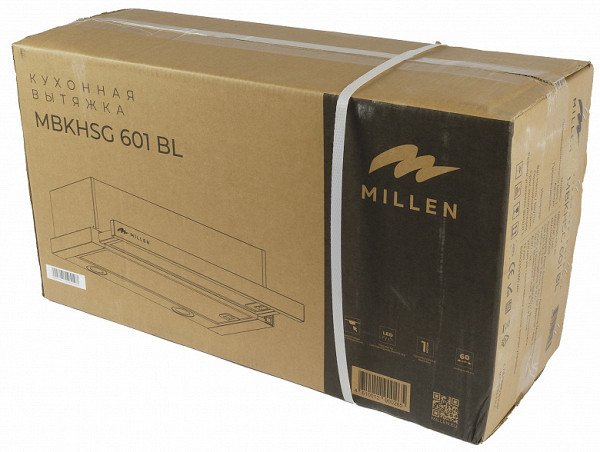
Brief technical specifications and manufacturer's contact information are provided on the sides of the package.
Having opened the box, we found in it:
- hood assembly with installed aluminum anti-grease filters
- bracket with a set of hardware for installation
- check valve with a diameter of 150 mm
- user guide
- warranty card

At first sight
Most telescopic kitchen hoods have a similar design, and the Millen MBKHSG 601 BL is no exception. We have seen similar solutions in Candy, Lex and Hebermann hoods. The body of these models assumes full embedding: only the front panel, made in the form of a retractable panel with black glass, and the lower part are facing the user. All other components are painted black and, after installation, are hidden behind the elements of the kitchen unit.
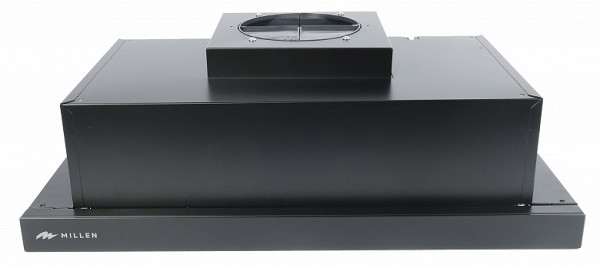
The front panel of this model is decorated with the manufacturer's logo.

On the lower side, two round LED lamps and an aluminum anti-grease filter stand out.
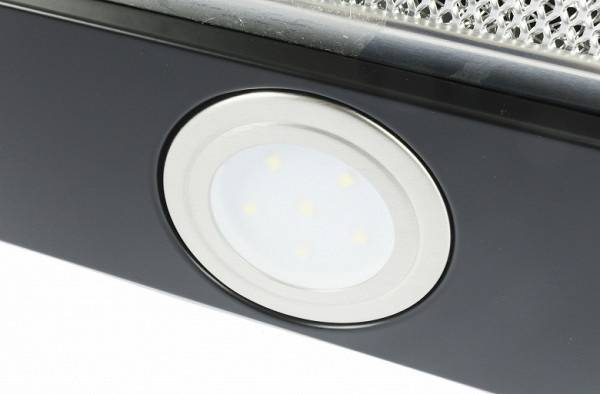
The lamps use six bright LEDs with a spectrum closer to cold. The power of each lamp is 0.5 W.
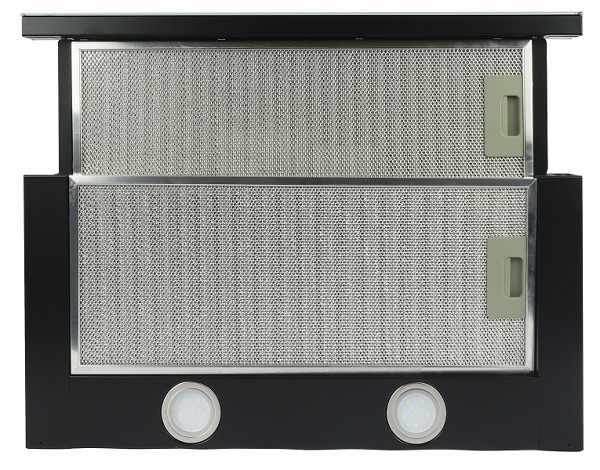
Inside the retractable panel there is a second anti-grease filter — a slightly smaller area.
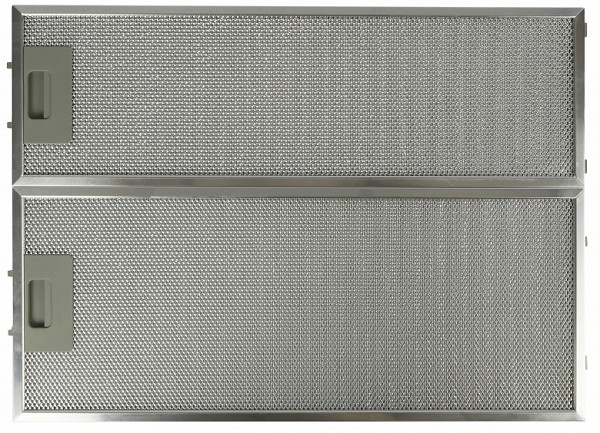
The design of the filters is familiar to anyone who owns a kitchen hood: a three-dimensional aluminum mesh that prevents the penetration of grease and oil splashes is installed on a metal frame using plastic latches.

The inner surface of the retractable part is dense: the hood is activated only after deployment. Inside the housing there is an electronics control unit and a ventilation motor housed in a cylindrical housing.
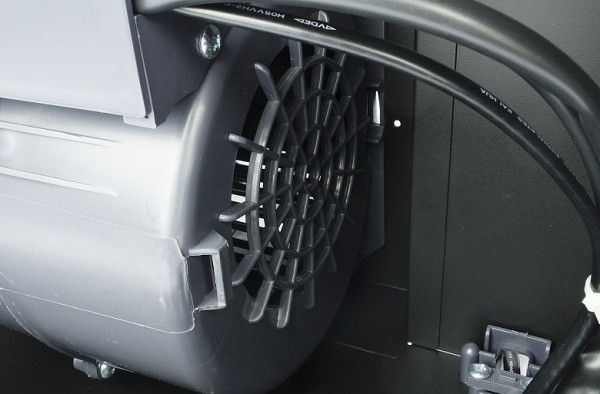
The inner surface of the retractable part is dense: the hood is activated only after deployment. Inside the housing there is an electronics control unit and a ventilation motor housed in a cylindrical housing.
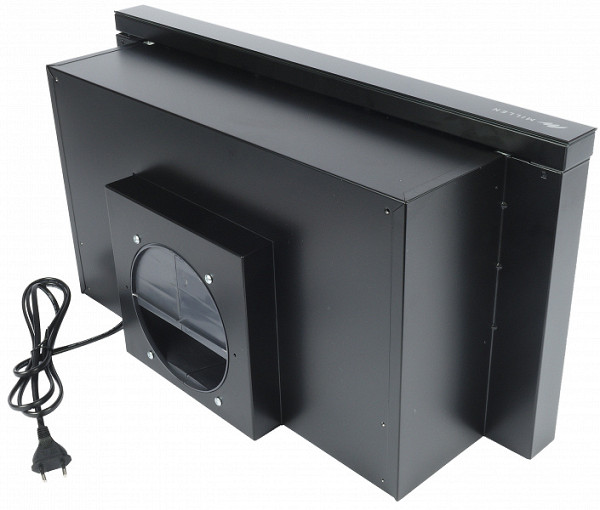
If the device is planned to be connected to exhaust ventilation, the non-return valve included in the kit must be installed at the outlet.
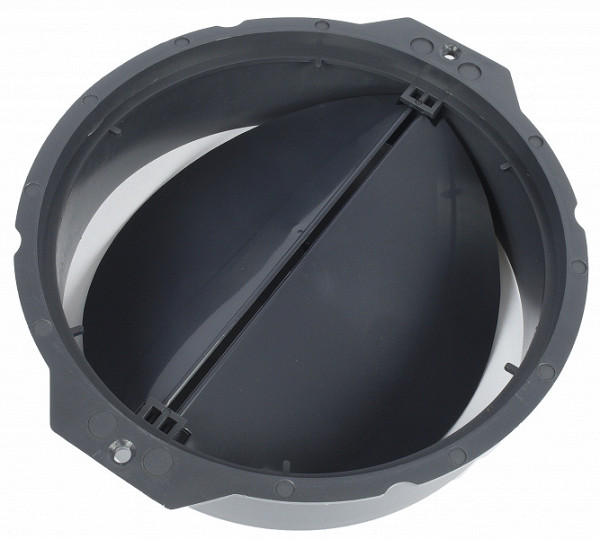
The plastic case with a diameter of 120 mm is equipped with two petals that prevent the penetration of dust and contaminated air from the ventilation pipes into the device. This valve is securely attached to the body using the included screws.
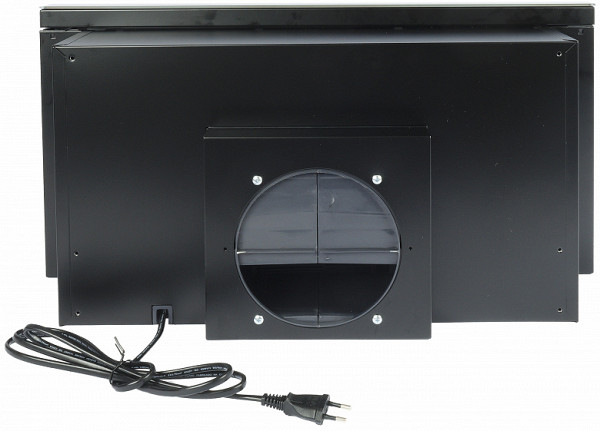
An electrical wire with a two-pole plug comes out of the top of the housing.
Instructions
The instructions for the hood are a 24-page A5 brochure. It is compiled for two models of Millen hoods, the differences between which are explained in detail.
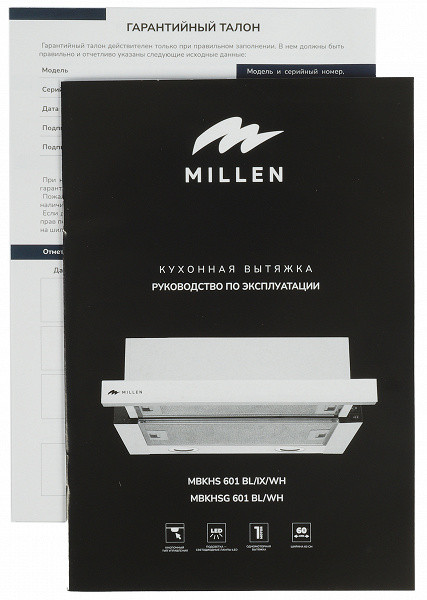
The manual contains comprehensive technical characteristics of the device, describes its installation and operation, gives tips on caring for the device, and ends with a table with possible malfunctions and recommendations for eliminating them.
Control
The control panel is located at the end of the device, to the right of the retractable part. It consists of two key switches: a two-position one that controls the backlight, and a three-position one designed to turn on two fan speeds.
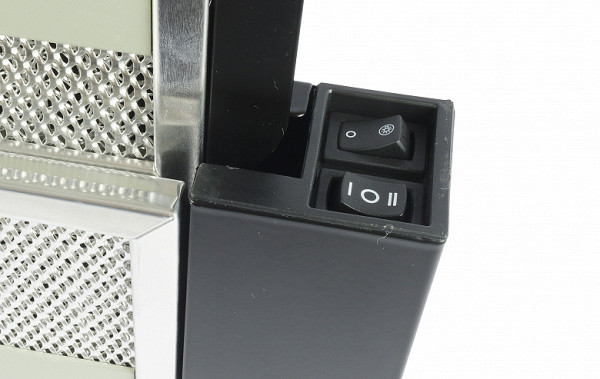
The retractable panel is equipped with a limit sensor: lighting and ventilation are switched off automatically when folded.
Exploitation
As a standard, we do not test hoods in real kitchen conditions, as the installation of each device may vary. Our measurements are limited to laboratory tests that include performance, noise, and power consumption.
During testing, we noted that the control switches on the hood are well placed and respond to pressure with good responsiveness. Their use is easy and intuitive.
The backlight lamps built into the design are highly bright. Their white, cool light makes it possible to use the hood as the main source of lighting in the kitchen if necessary.
Care
To clean the metal parts of the housing, it is recommended to use a hot soapy solution, which should be applied using a soft cloth. The use of hard and abrasive materials is not permitted.
It is better to wash the glass panel with a glass cleaner, and it is recommended to wipe the controls with a soapy solution, then dry them completely with a clean cloth. Before servicing the hood, it must be disconnected from the power supply.
Aluminum grease filters are recommended to be cleaned regularly to remove dirt, at least once every two months. To do this, you can wash them with water and detergent and then dry them thoroughly before replacing them. It is also possible to wash the panels in a dishwasher at a temperature not exceeding 60 °C. After dishwashing, aluminum may change color — this is normal and does not affect the operation of the filters.
Carbon filters used in recirculation mode are recommended to be completely replaced every 6-10 months of operation. New filters are available for purchase on the manufacturer's website.
Our measurements
The energy consumption of the hood depends, of course, on the speed of its fans.
| Energy consumption, W | |
|---|---|
| Speed 1 | 94 |
| Speed 2 | 101 |
| Lighting | 0.9 |
We measure the noise level by moving the microphone of the sound level meter to a distance of 1 m from the working hood and pointing it at it. To simulate real-life conditions as best as possible, we connected a 2-meter pipe to the output of the hood — the “rear” noise in this test is removed far enough so as not to affect the measurement results.
| Noise level, dBA | |
|---|---|
| Speed 1 | 54 |
| Speed 2 | 64 |
As in the previous review, to evaluate the performance of the hood, we connected it to a two-meter smooth PVC pipe with a diameter of 160 mm. This allows you to stabilize the difference in air flow speed at different sections of the device outlet. At the outer opening of the pipe, we measure the air flow velocity at 17 points, after which these values are averaged using the arithmetic mean method.
Average speed is used to calculate the hood capacity in cubic meters of air per minute. The measurement results for this model are presented below (figures are in meters per second).
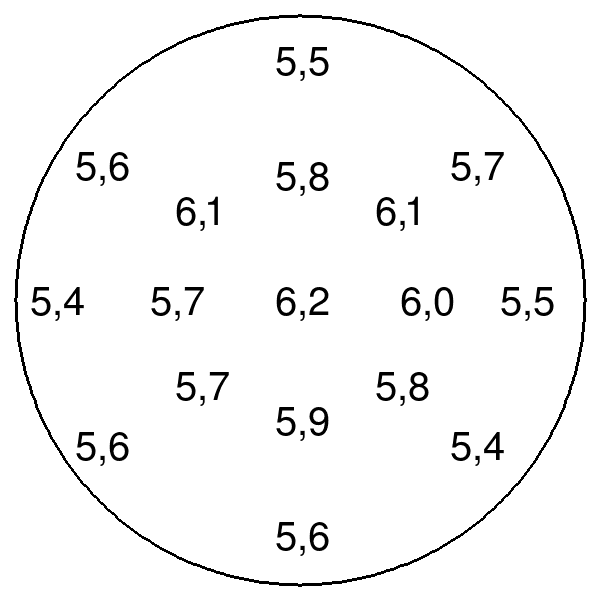
Thus, the average air flow speed at the outlet of the pipe is 5.7 m/s. Considering the pipe diameter (160 mm), the productivity is 6.9 cubic meters per minute (415.35 m³/h). Despite the significant discrepancy with the passport values, the performance of the Millen MBKHSG 601 BL turned out to be noticeably above average compared to other hoods of this design that we reviewed.
conclusions
Millen MBKHSG 601 BL stands out for its simple design, which will easily fit into the interiors of kitchens of various styles. The controls are simple and convenient, and the LED backlight successfully copes with its functions.
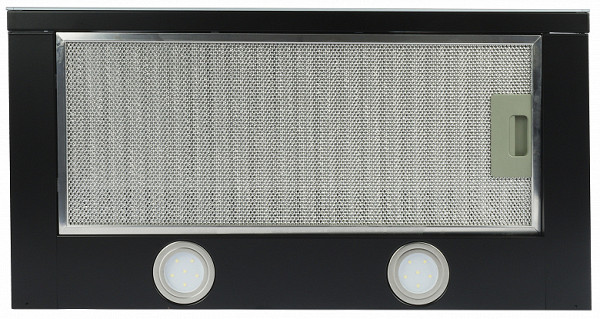
During laboratory tests, the device demonstrated high performance in its class, but the noise level was slightly higher than desired: physics, unfortunately, is difficult to fool.
The front panel of the slide-out element, made of black glass, looks attractive, but fingerprints on it remain for a long time and are visible, requiring frequent wiping.
Pros:
- great design
- good performance
- predictable control
- low price
Minuses:
- high noise level
- The glass cover of the sliding panel leaves visible fingerprints
